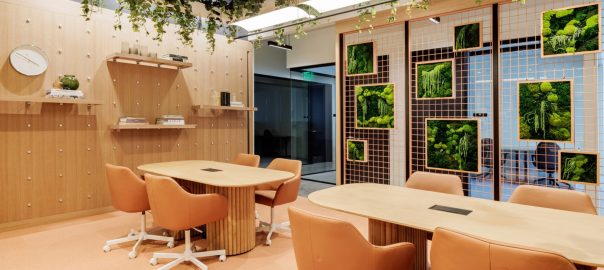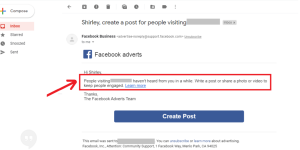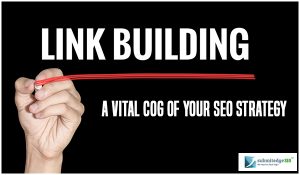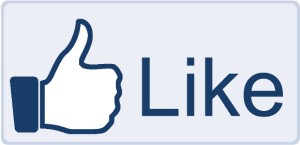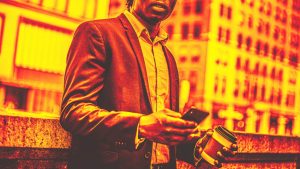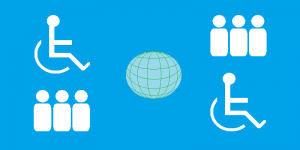By Nate Berg
The typical Ikea store is a vast, circuitous warehouse chock full of all the imaginable things one might need to fill up a house. Even a disciplined shopper with a precise shopping list can expect to spend a lot of time barreling through the average store’s hundreds of thousands of square feet.
Now, a subsidiary of the parent company that runs many of those time-vortex retail locations is opening a new kind of Ikea designed for customers to stay all day.
The location is called Hej!Workshop, and it’s situated on the top floor of an Ikea complex in downtown San Francisco. Not merely an extension of the store, the complex is something its creators are calling a “meeting place”—equipped with cafés, lounge spaces, and a large coworking facility operated by the flexible workplace provider Industrious.
Ingka Centres, a subsidiary of Ingka Group, which operates about 90% of the Ikea stores around the world, opened its first Hej!Workshop in Stockholm, Sweden, last year. The coworking concept builds on the community-centric spaces that Ingka Centres has already built into 33 Ikea stores around the world. They typically include restaurants, lounges, and publicly accessible spaces for events, meetings, and yoga and wellness classes. On top of shopping, eating, and recreation, Hej!Workshop adds work to the mix.
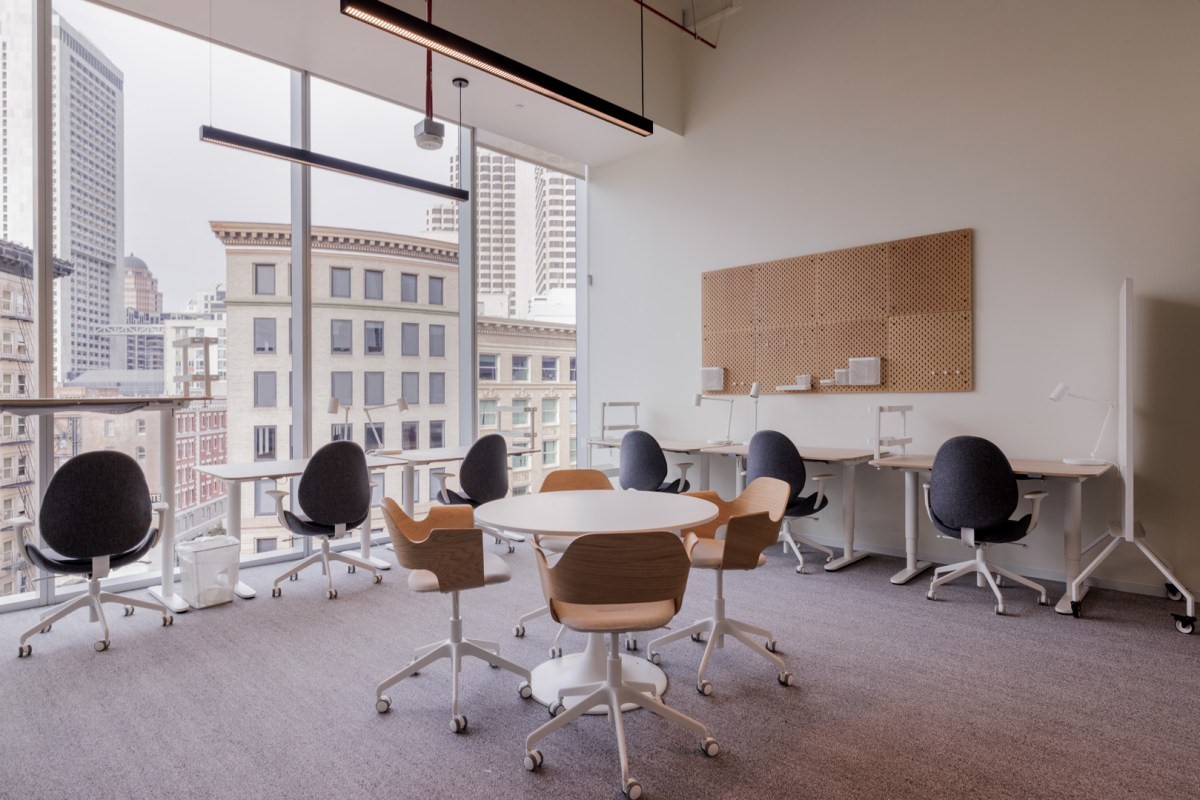
“We see that the demand of consumers is changing from just shopping to high expectations from locations like ours,” says Anna Steyn, new business and innovation sprint leader for Ingka Centres. “We call them meeting places. We don’t call them shopping centers because we want to create places where people come together, where they socialize, shop, work.”
The San Francisco Hej!Workshop comes at a time when offices and even downtowns are being reevaluated. As one of the poster cities for the economic doom caused by a shift away from offices, San Francisco has found itself needing to make the case that its downtown is still a place to visit and that companies should still operate out of its office buildings. Combining a workplace with a social space with a shopping space—a logical mix of uses found in urban areas around the world, even throughout history—creates desirable conditions for a person visiting one of those spaces to want to visit others. Hej!Workshop is, in a sense, one of the more innovative solutions to the downtown-as-ghost-town problems for many U.S. cities, especially San Francisco.
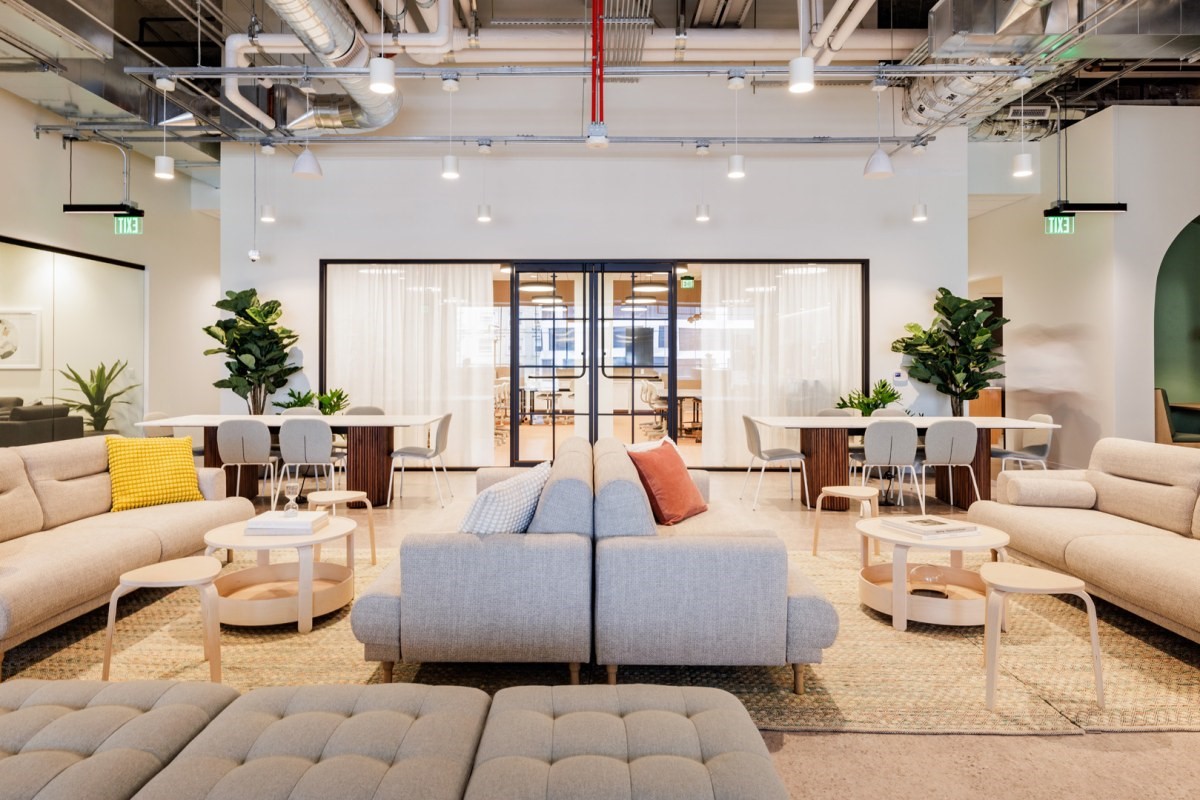
The first Hej!Workshop in Stockholm has proven to be a source of urban activity, according to Steyn. “We have customers who come to Ikea to shop and then they become Hej!Workshop customers,” she says. “You work for a few hours, then you shop, then you go to a restaurant, then you go to the gym.”
The San Francisco version is an effort to bring the multi-activities concept to the U.S. market. Combining social and work spaces with Ikea’s retail location, the concept colocates activities that a person might want to take advantage of, if only they were less far-flung.
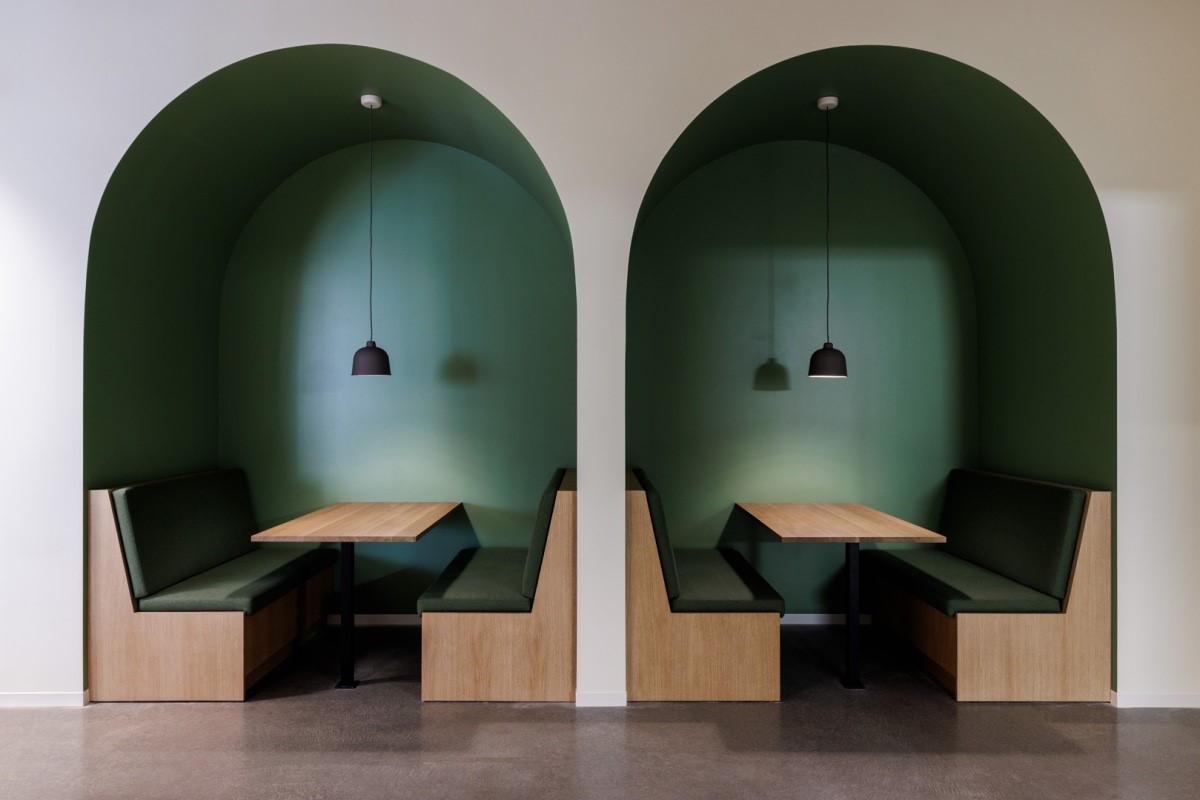
Hej!Workshop covers 46,000 square feet, filling the entire fifth floor of the building. Industrious, which operates nearly 200 flexible work locations around the world, worked with Ingka Centres and Ikea for Business to design and outfit the space, which is a mix of lounge-like casual meeting spaces, larger rooms for trainings and group sessions, and quiet spaces where individuals can do heads-down work. Industrious CEO Jamie Hodari says that Ikea’s DNA is unmistakably present.
“The textures and the colors are going to be brighter, more fun, and definitely playful in that Scandinavian kind of way,” he says. “Maybe a little less of the uniform, midcentury somber color palette with just wood and leather that a lot of high-end workplaces have tried to do over the last five or seven years.”
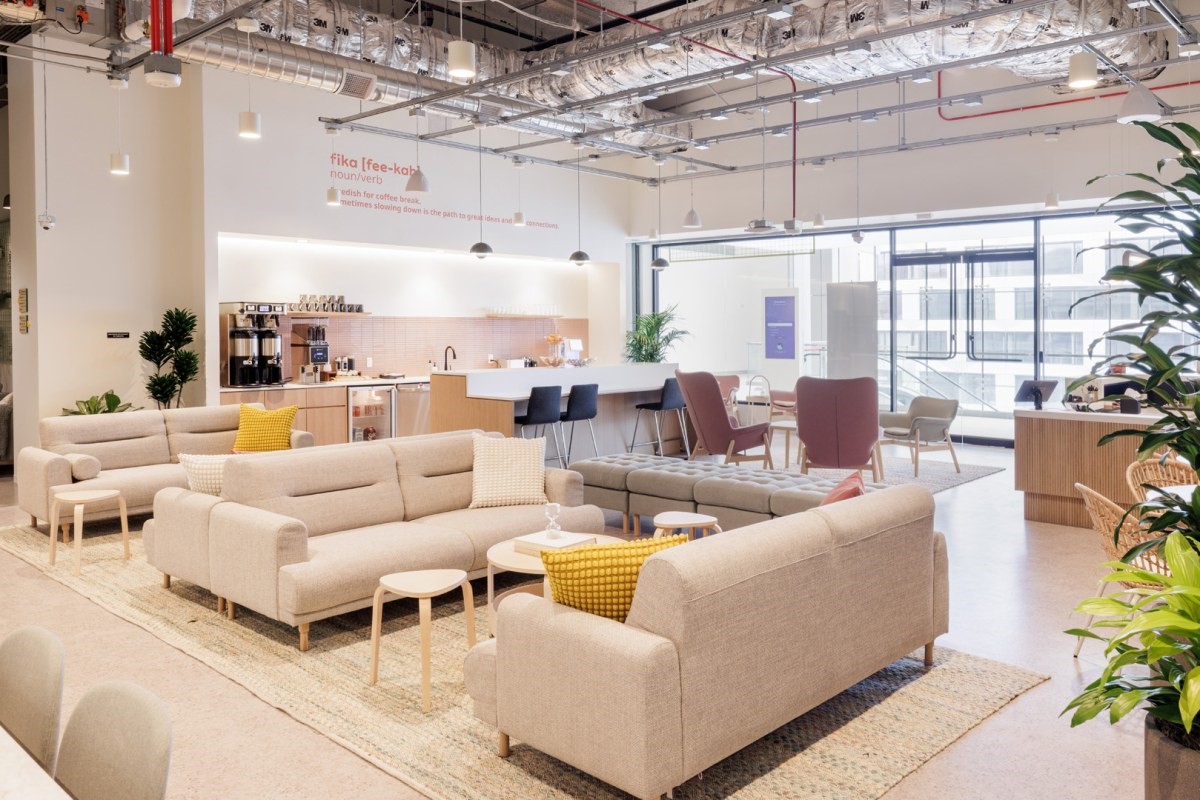
Hej!Workshop operates on a membership model, and members are provided breakfast, coffee, snacks, and “Swedish-influenced” lunches and happy hours. Hodari says the mix of individual workstations and open, more collaborative spaces creates an informality that aligns with what people now want from the post-pandemic workplace.
“In most Industrious locations we’ve felt constrained by the fact that people expect a workplace to be a very serious place. And I think what Ingka [Centres] has nudged us on is people want to have fun,” Hodari says. “In this day and age, if they’re going to get out of their living room and get on BART or walk somewhere, they want it to be somewhere they’re exposed to new ideas, where they laugh a little, where they’re exposed to some whimsy.”
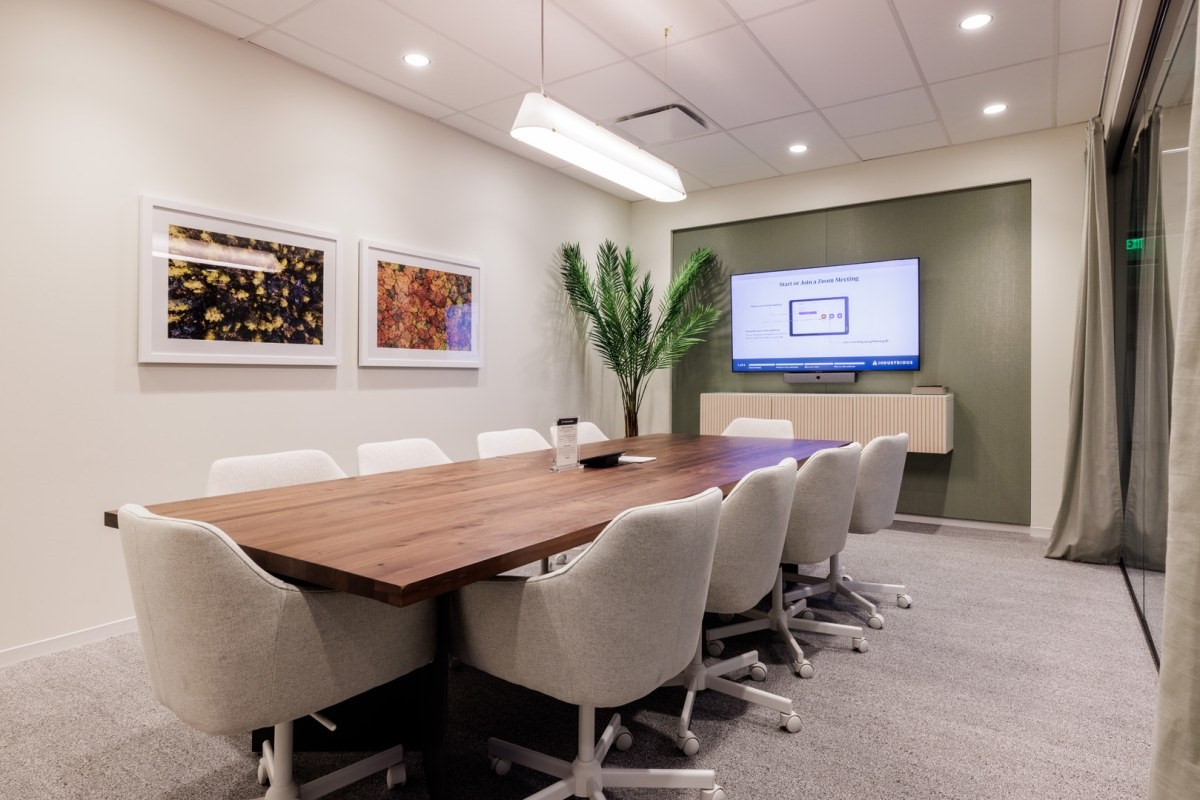
Some of that may come from the way the space is furnished, which is, of course, almost entirely with Ikea products. That sets a certain tone for the space but also provides some useful information for Ikea and its sister company. “This is a great opportunity for us to test products and collect feedback from customers. It’s a live environment,” says Steyn. “The main purpose of the project was not to create an Ikea showroom, although it’s a good testament to what Ikea can do. The main purpose was to create working environments that resonate with the consumer.”
Steyn isn’t able to say what the company’s plans are for expanding Hej!Workshop beyond San Francisco, but it’s hard not to see this as a proving ground for the concept. Hodari, whose company has been running flexible workplaces since 2013, sees the concept as a new model: “My suspicion is you will see more of these in the future.”
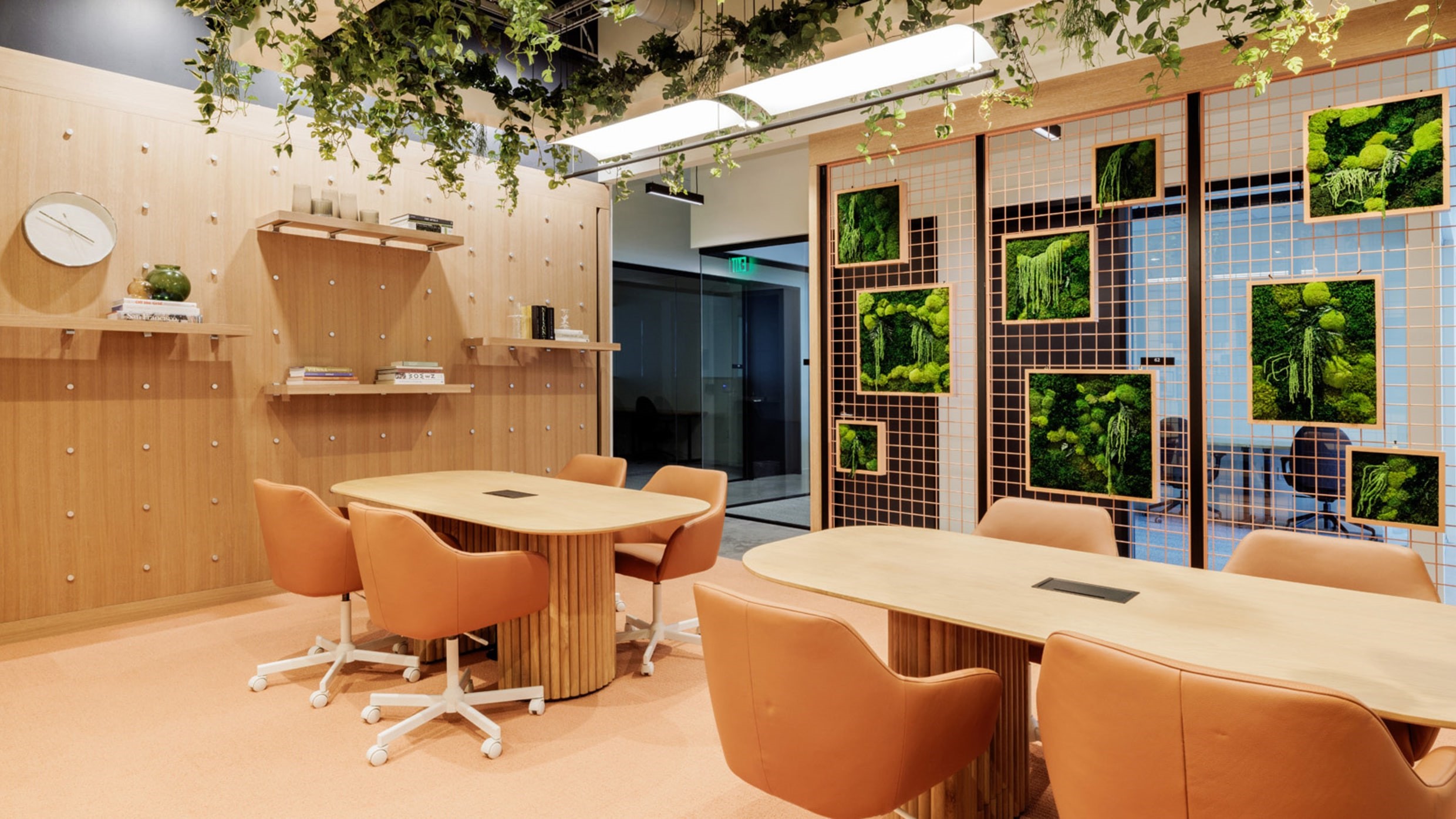
(2)
